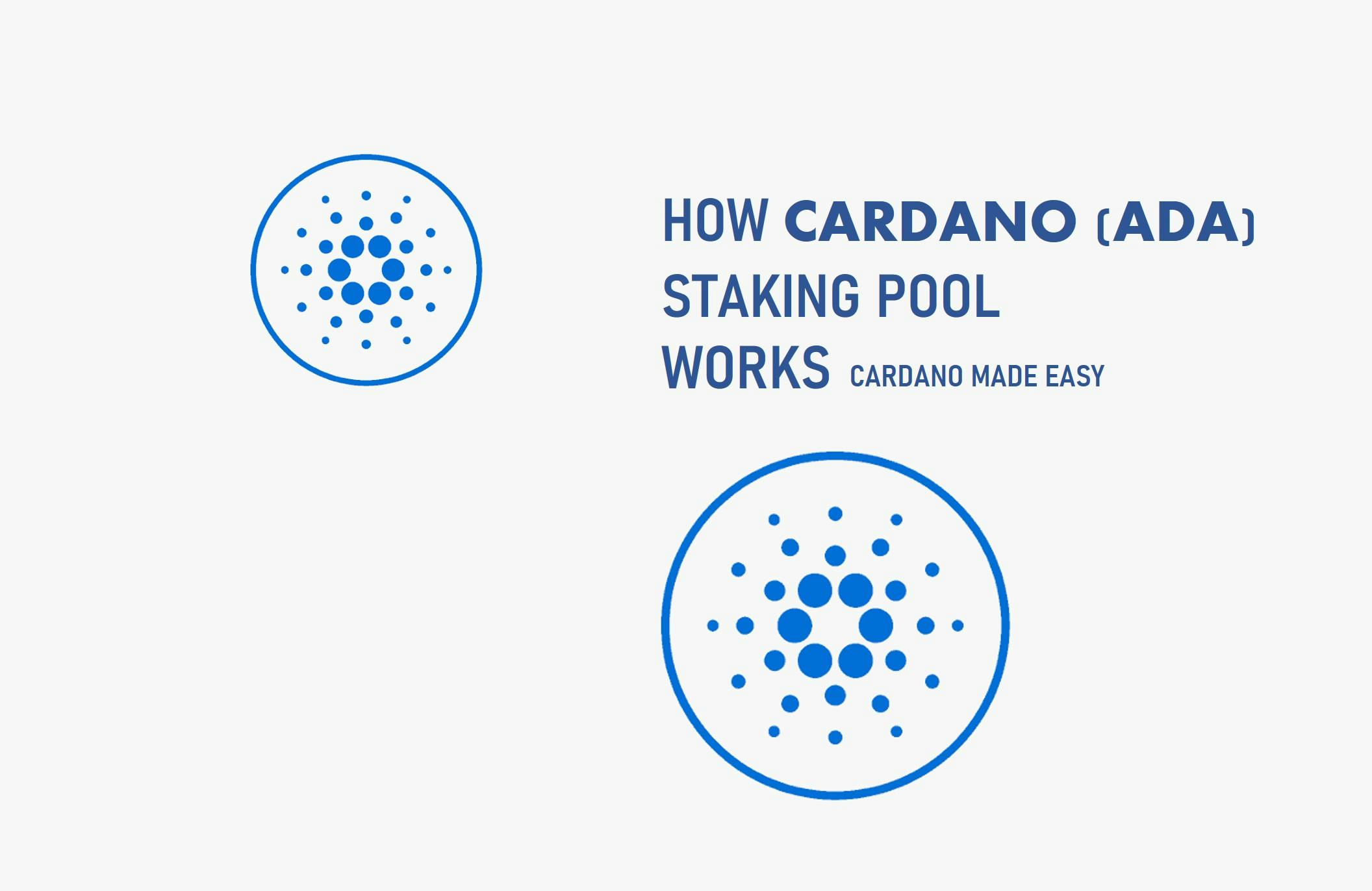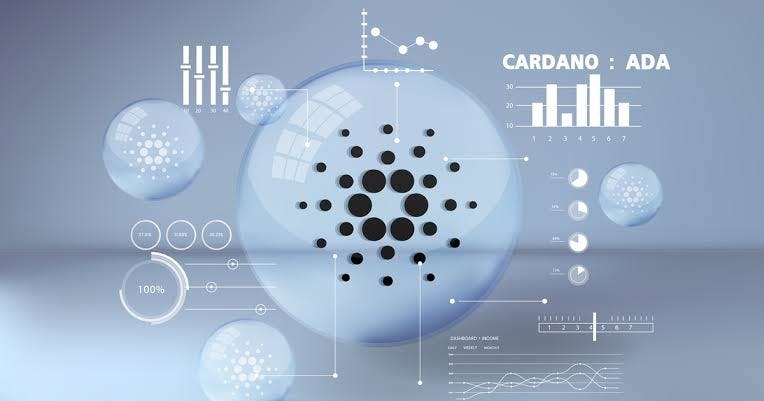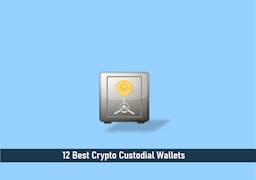
Cardano is a blockchain network created in 2017 by Charles Hoskinson (the co-founder of Ethereum) and Jeremy Wood. Input Output Hong Kong (IOHK) is supporting the project. Here this article will be taken a look at stake pool and how it works.
The network’s native token, ADA, aims to facilitate transactions and promises a better overall experience compared to Bitcoin and Ethereum. ADA’s total supply is 45 billion coins.
The structure of Cardano is quite similar to that of Ethereum. The project focuses on its future plans to revolutionize the financial economy and the cryptocurrency world and uses a Proof-of-Stake (Proof-of-Stake) consensus mechanism for these purposes.

Key Takeaways
•The structure of Cardno is quite similar to that of Ethereum.
•Cardano uses the PoS (Proof-of-Stake) system.
•Cardano allows you to participate in the blockchain if you hold ADAs, Cardano’s token.
•A Stake Pool is made up of a relay which distributes the blockchain on the network, and a block-producer node.
How Does Cardano Work?
Cardano uses the PoS (Proof-of-Stake) system, which is a crucial differentiator from the Bitcoin and Ethereum networks, which use the Proof-of-Work (PoW) system.
The PoW rewards miners who solve complex mathematical problems in order to extract a new block on the blockchain, which is called “mining”. In contrast, in the PoS system, it is the coin holders who verify and generate the new blocks on the blockchain.
The proof of stake system is a greener alternative for blockchain networks in general, as it does not require brutal hashing of coins (the process of cryptocurrency mining). By using the PoS system, therefore, the development of the blockchain does not depend on the hardware.
The backbone of a PoS blockchain is the staking pool. This is a group of users who use their coins to validate blocks on the network. In return, users are rewarded with the native blockchain asset. The cryptocurrency staking process is simple and does not expose its users to any risk.
In addition to using the PoS system, Cardano ensures that the network is easily expandable, thanks to the design mode of its blockchain.
Unlike most other networks, which only operate on a single layer, the network has two layers: the Cardano Settlement Layer (CSL) and the Cardano Compute Layer (CCL):
- The CSL layer performs and records transactions on the blockchain.
- The CCL layer is the smart contract layer that performs automatic transactions.
Due to this design, the Cardano blockchain can perform faster transactions and its fees are lower.
In today’s market, most cryptocurrencies aim to strike the right balance between speed, security, and decentralization. However, few of them manage to solve all of these problems. Cardano appears to be one of the few to do this, and the platform continues to grow.
SEE ALSO: What Cryptos Can Be Staked On Coinbase
How to Mine Cardano
To mine Cardano, you must have it in a Cardano Wallet. Ada tokens cannot be mined in the same way as other cryptocurrencies, as Ada uses the Proof of Stake (PoS) algorithm.
Ada tokens, native to the Cardano platform, therefore work when setting up other cryptocurrencies, and they have all been mined when they were created. As Ada uses the PoS algorithm, users who own Ada tokens can all become validators and participate in its governance.
Cardano Staking
Skating, also called “mining”, designates the act of validating blocks of transactions. It concerns cryptocurrencies that work on the PoS algorithm. When the blocks have been validated by the users, they are paid by receiving tokens from Ada.
What is a Stake Pool?
The Cardano blockchain works with Delegated Proof of Stake, allowing the token holder (ADA) to participate in the operation of the network against interest. To do this, they must choose a Stake Pool. What is a Stake Pool, and how does it all work?
The Stake Pool, A Prize Pool
Cardano allows you to participate in the blockchain if you hold ADAs, Cardano’s token. But installing, configuring, monitoring and maintaining servers is not a job for everyone. That’s why, if you don’t have, like the vast majority of people, the skills to do this Cardano has a solution for you: Delegate.
Clearly, it is about choosing a node of the network and giving it your voting powers. The Stake Pool, collecting the voting rights of a set of users, has a greater stake than if it does not collect any delegation. As a result, the network will pass more transaction to her, and she will collect more rewards.
The rewards will then be divided between the Stake Pool and its delegates, according to the operational criteria of the Stake Pool.
SEE ALSO: Is Polkadot Better Than Cardano?
How Does Stake Pool Work?
A Stake Pool is made up of a relay which distributes the blockchain on the network, and a block-producer node. The relay offers a shield against network attacks and distributes the blockchain to other nodes, while the producer is used to create the blocks when the network assigns them.
How Are the Rewards Divided Between the Stake Pool And its Delegates?
When the Stake Pool receives the rewards at the end of an era (period of time defined by the blockchain, 5 days for Cardano), the mining rewards are distributed. Then the division begins.
Each Stake Pool displays 2 different types of fees: fixed fees and variable fees. The fixed costs, set at a minimum of 340 ADAs by the blockchain, are supposed to cover the fixed costs of the operator (machines, human resources, etc.). Variable costs are a percentage of the earnings made.
SEE ALSO: How to Stake Cardano on a Crypto Wallet
When the Stake Pool receives the mining rewards, the fixed costs are deducted immediately. Then, on the remaining sum, the variable costs apply. The remaining sum is then divided between the different users, in proportion to their investments. The rewards are therefore not guaranteed in each epoch, neither for the Stake Pool (which must create at least 1 block), nor for the users.
For small Stake Pools and their users, the rewards are to be calculated over the long term: some will mine a block every 5 eras, others every 20 eras. But since they are smaller, the profits will cover previous eras.
Frequently Asked Questions (FAQ)
1. How Does Cardano Staking Work?
A Stake Pool is made up of a relay which distributes the blockchain on the network, and a block-producer node. The relay offers a shield against network attacks and distributes the blockchain to other nodes, while the producer is used to create the blocks when the network assigns them.
2. Is it Profitable to Run a Cardano Stake Pool?
A stake pool is profitable when it reached the stake cap.
3. How Much Cardano do You Need to Run a Stake Pool?
The minimum fixed ADA staking fee across the Cardano network is 340 ADA.
Final Thoughts
Cardano is a very unique cryptocurrency due to the fact that its blockchain can perform faster transactions and its fees are lower.
As discussed in this article, Cardano is currently one of the few cryptocurrencies out there which has managed to solve the problem of speed, security and decentralization and as such its platform continues to expand every day.
Read More




